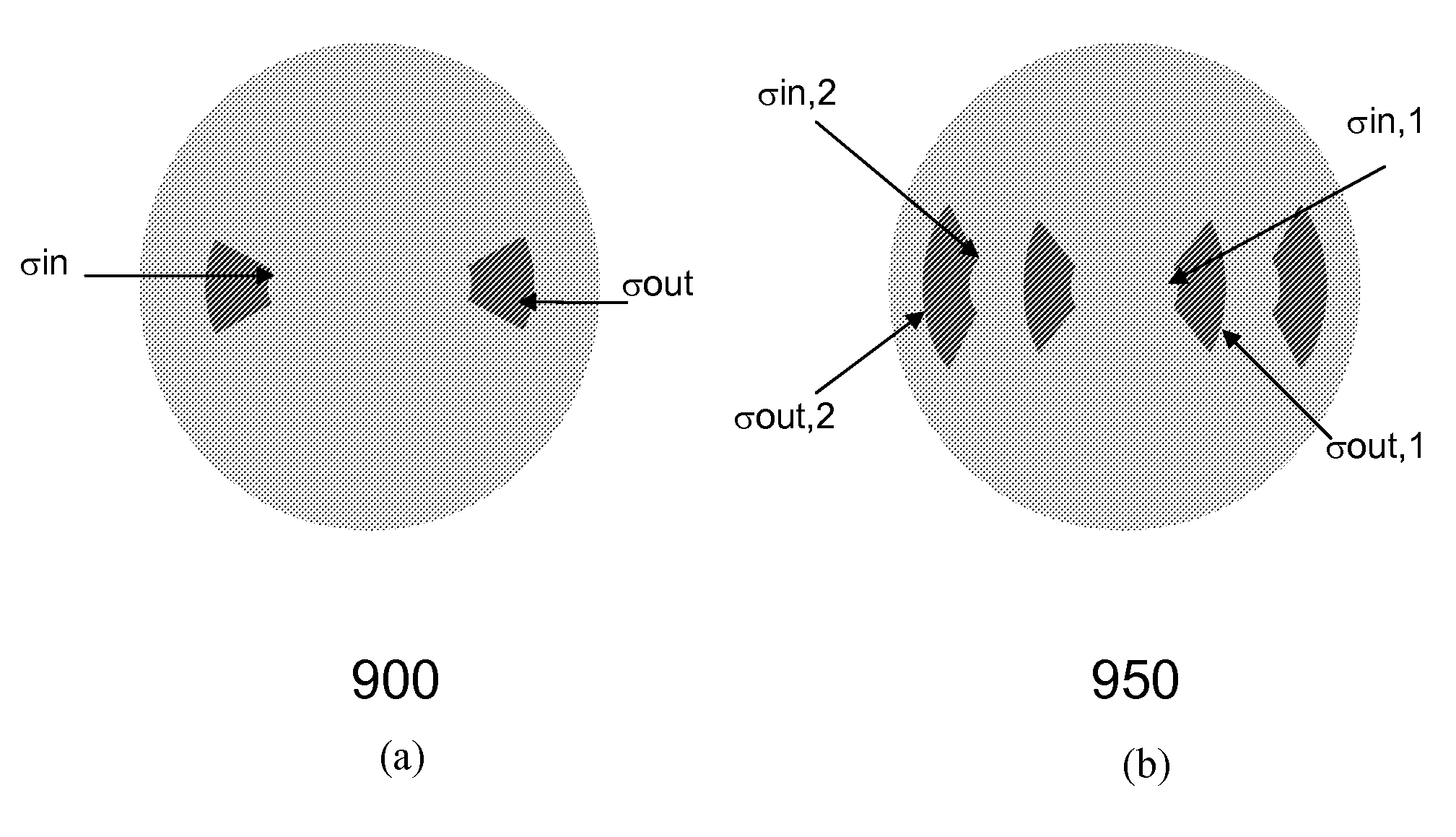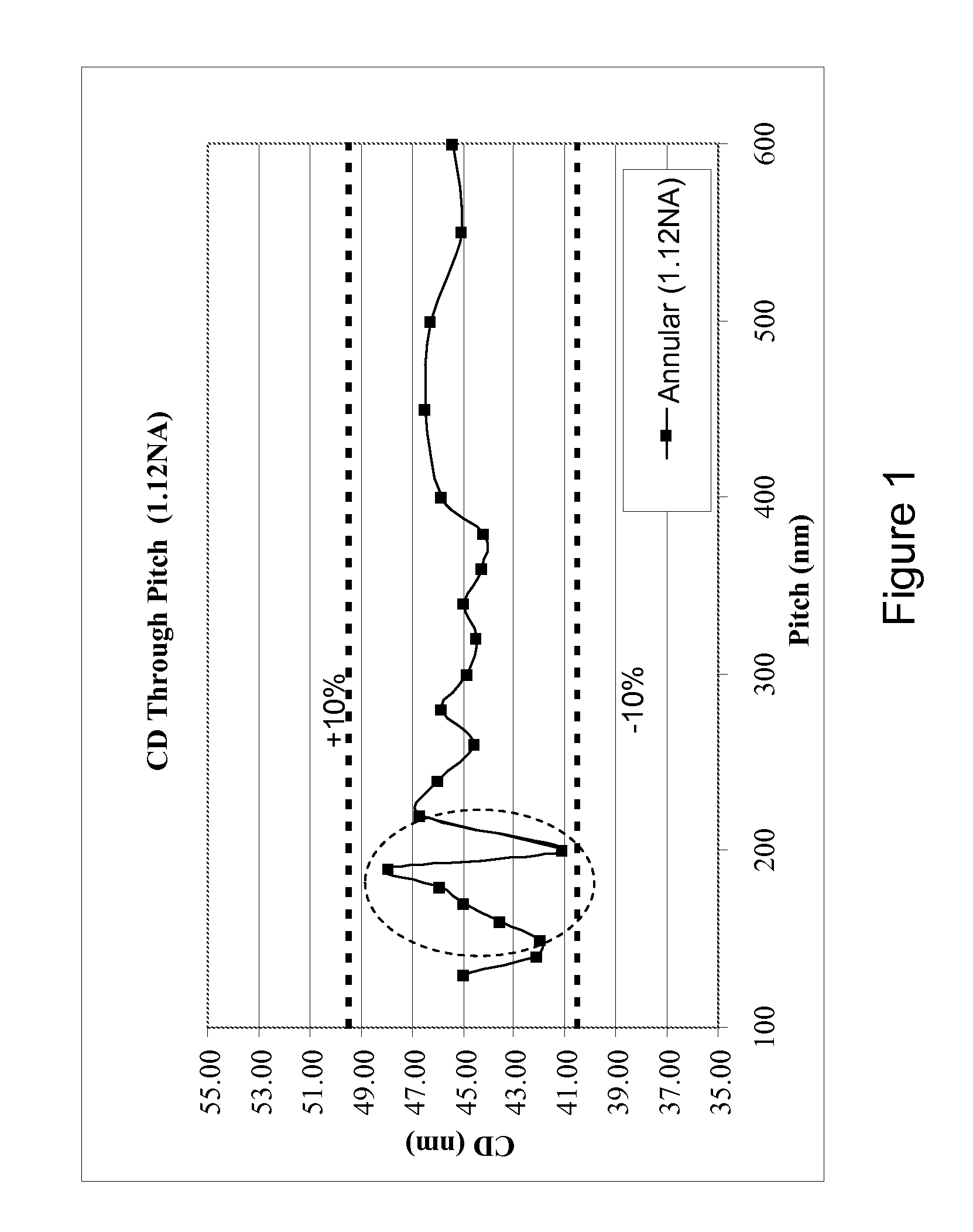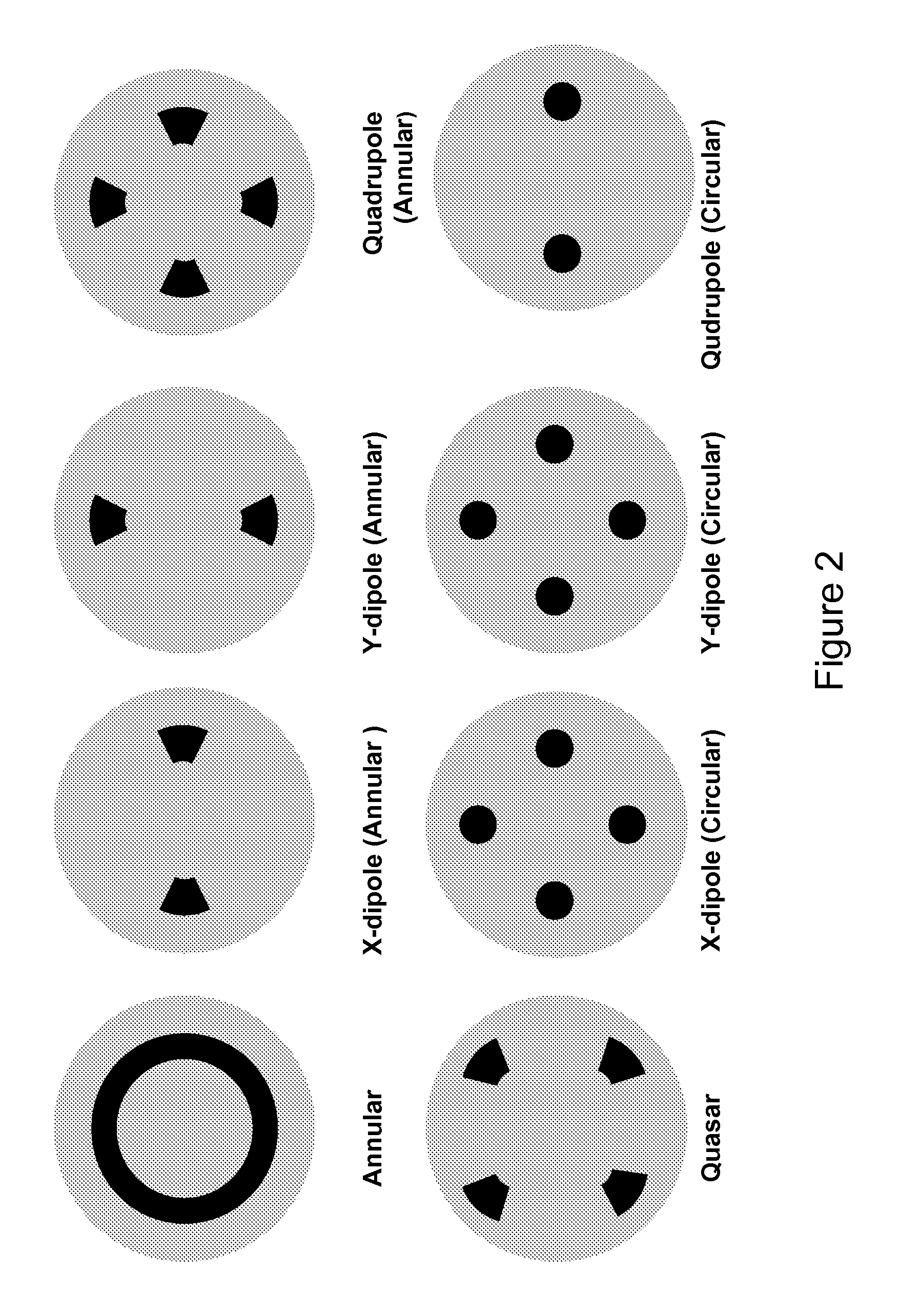Methods for enhancing photolithography patterning
a technology of photolithography and patterning, applied in the field of photolithography processes, can solve the problems of unsuitable forbidden pitches, high dependence, and space is too small for scattering bars, and achieve the effects of improving process windows, improving process windows, and improving second pitches
- Summary
- Abstract
- Description
- Claims
- Application Information
AI Technical Summary
Benefits of technology
Problems solved by technology
Method used
Image
Examples
Embodiment Construction
[0029]Generally, the present invention relates to photolithography processes that reduce variability in critical dimensions of photoresist structures caused by differences in proximity to other features.
[0030]During an exposure process, the illumination beam can be projected onto a photomask from a number of different angles depending on the arrangement of the opening or openings on the aperture of an exposure tool. If aperture comprises an opening that is situated at the center of the aperture, the illuminating beam will be projected substantially along the optical axis, that is, the axis orthogonal to the condenser lens and photomask. This type of illumination is known as “On-axis illumination”.
[0031]On the other hand, if the aperture is centrally obstructed and has one or more openings located off-center, the illumination beam is tilted projected onto the photomask away from normal incidence, in other words, at an angle to the optical axis. This type of illumination is referred t...
PUM
 Login to View More
Login to View More Abstract
Description
Claims
Application Information
 Login to View More
Login to View More - R&D
- Intellectual Property
- Life Sciences
- Materials
- Tech Scout
- Unparalleled Data Quality
- Higher Quality Content
- 60% Fewer Hallucinations
Browse by: Latest US Patents, China's latest patents, Technical Efficacy Thesaurus, Application Domain, Technology Topic, Popular Technical Reports.
© 2025 PatSnap. All rights reserved.Legal|Privacy policy|Modern Slavery Act Transparency Statement|Sitemap|About US| Contact US: help@patsnap.com



